Au Revoir Biennale – To Be Resurrected By Art
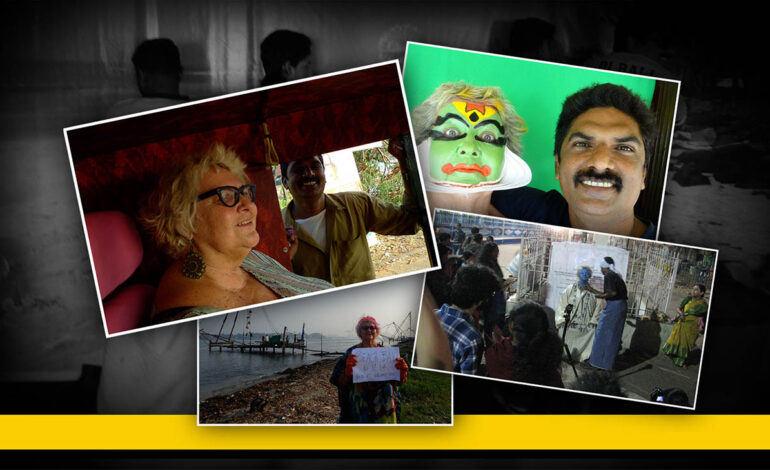
An alternative Guide to the Kochi Muziris Biennale
How many times have you been fixed, I mean put back together again, by a song, a film, a piece of art? As my team and I lurched from crisis to illness to crisis, I took my work-oppressed, battle-weary soul to the Kochi Muziris Biennale in Kerala. My dear friend ‘S’ and I went to heal ourselves and forget about life for a while. We found ourselves unexpectedly healed and lighter by of a very special encounter. It was with a dynamic duo that conducts art tours, runs a homestay and an autorickshaw. They call themselves the Di[na]Mo . Di stands for Di Ball, (Dianne if you insist on being old school). She is an artist who washed up on the Kochi shores from Brisbane, when the Biennale first began in 2012. She was 60 years old then, and, therefore 70 now. The ‘Mo’ in the duo is Di’s best friend and resurrector-in-chief. MoMo or Maheen is an autorickshaw driver – the only one who did not cheat Di when she first arrived in Kerala from Australia. He is an excellent art guide and is from Kochi. Di pointed out with pride that he is a Muslim man from Kerala who decided to put a broken Aussie woman back together again. Together, they have the power to fix almost anyone who comes to Kochi in pieces.

Of course, they both knew their art. MoMo from a working-class background has travelled across the world in pursuit of art with Di – from Mumbai to Brisbane to the Gold Coast to Cambodia. And when he sat down with brush and paper, the outcome was sometimes more striking than Di’s even though she is a professional artist, art teacher and critic.
Instead of being an outsider, coming to inspect Kochi’s art, the duo immediately recast us as insiders. We were handed a menu of things they recommended we see. The curated menu came with conversations with the actual artists wherever possible. With the duo, we got to look at the quiet exhibits, where people with no money but with a lot of heart struggled to put on a show. These were the lesser known artists exhibiting alongside the big ticket events. They were there because they believed that they could renew the world and fight for those with no voice. “They don’t take, they just give,” said Di.
How we got from one venue to the other was almost an art installation in itself. In the lead was Maheen with his `Ferrari,’ – his autorickshaw with plush leatherite seats. Following close behind on her scooty was the large-sized, flamboyant Di with hair dyed white, and a lavender tucked under her bright blue helmet. Her scooty was decorated with patterns made by a mehandi design-maker.
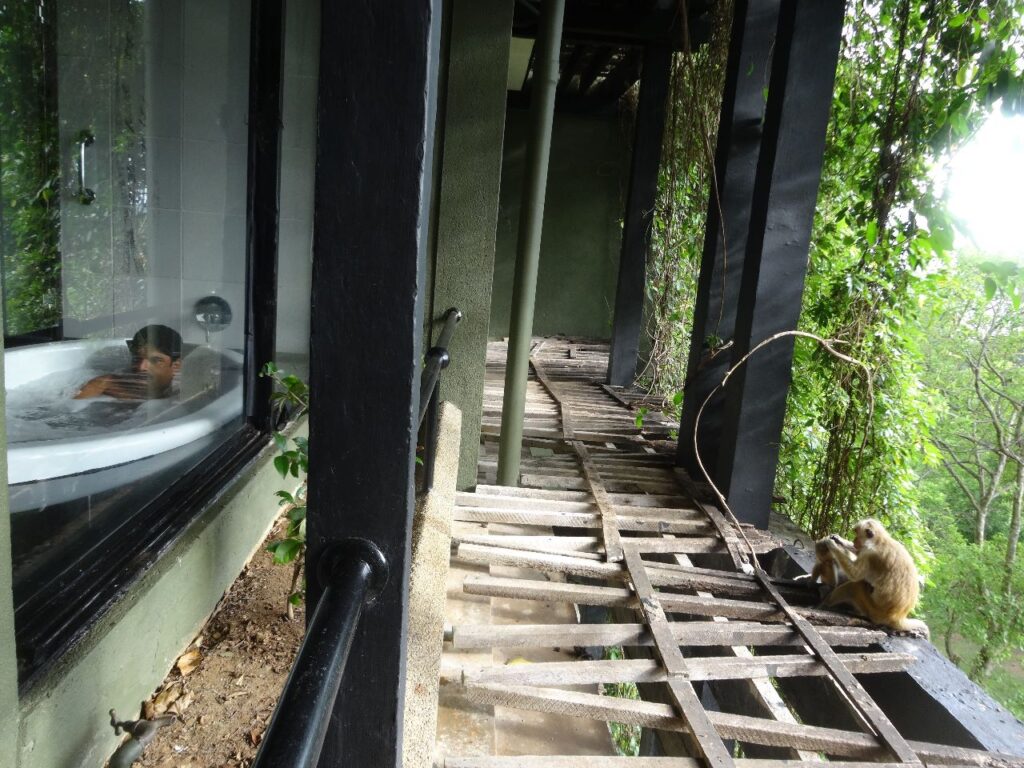
It was an unpretentious and fun way to tour. Equally unfussy was their home turned homestay. Called the Peacock Inn, it was a few streets away from the tourist hub. It was a relief to be in a regular Kochi residential area, at some distance from the millions of hotels competing for eyeballs, and shops selling turquoise and pashmina from Kashmir. The place was quiet, clean and teeming with bright green potted plants. Upstairs was a room, a kitchen and a bar and a large atrium full of masks and stories of their makers – artists who left a bit of themselves at the inn.
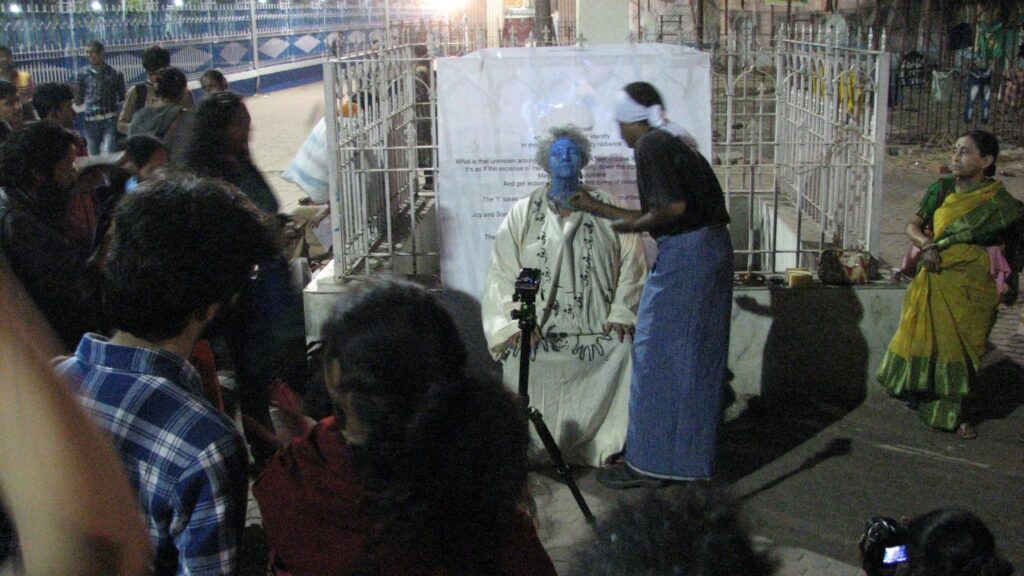
Downstairs, Maheen sat in front of a large screen TV watching cricket and Di dabbled on her laptop. Maheen’s son – Rizwan made a sponge-doll sculpture of Di which had pride of place in the Peacock Inn’s living room, beside her nativity crib where the God is a baby girl.
Next to the living room was the kitchen, where we made our own breakfast or, on occasion, decided to walk to the tourist zone on Bazar Road or Princess Garden Road and tuck in to some plump omelette and fruit.
Our tour started with the un-Biennale. The duo took us to a gallery called, ‘The Sea Is A Boiling Vessel,’ an alternative to the Biennale, which artist Riyaz Komu created after he split from that collective. We were taken through the front gallery, straight to Di’s personal curation. This was the famous photographer K R Sunil’s show. It’s what I called a beautiful sadness that had the effect of immediately washing over our own. These were portraits of performance artists that Sunil described as storytellers of the sea-shore – the Chavittu Nadakam. Artists who dressed like Greek and Roman kings in bright blue and red with gold rimmed crowns. This was a centuries old tradition dating back to Kerala’s history of intermingling with the Greeks and Romans and the Portuguese. Sunil had framed the performers in their regalia and finery but set them against their drab and tattered brown huts. There they were, wearing crowns, standing in knee-deep water as their homes were ravaged by the terrible floods of 2018-19. The contrast was a pantomime of horror – the falling down of their real lives as Dalit Christians, at the bottom of the social and economic hierarchy even as they performed as pretend royalty.
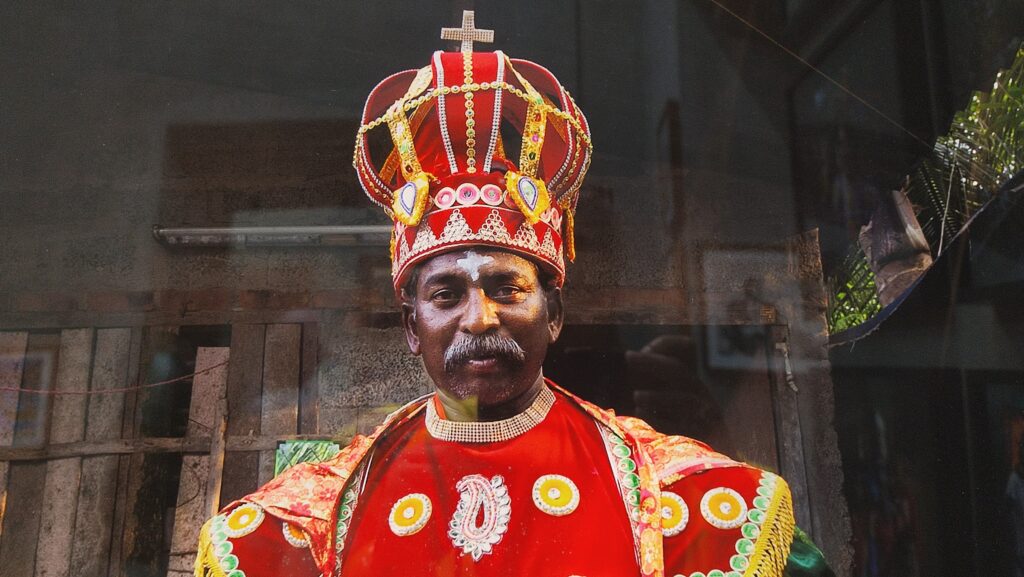
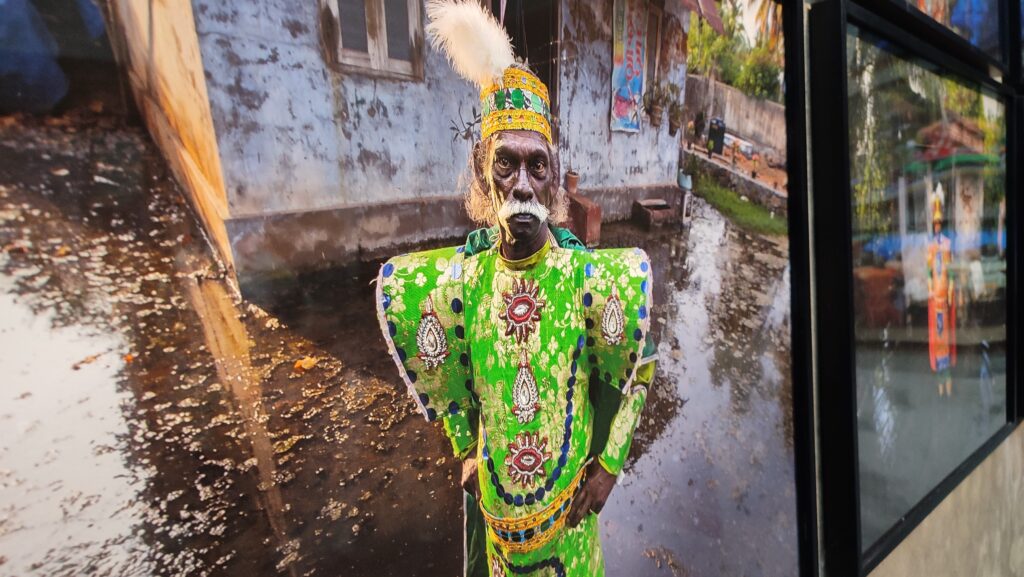
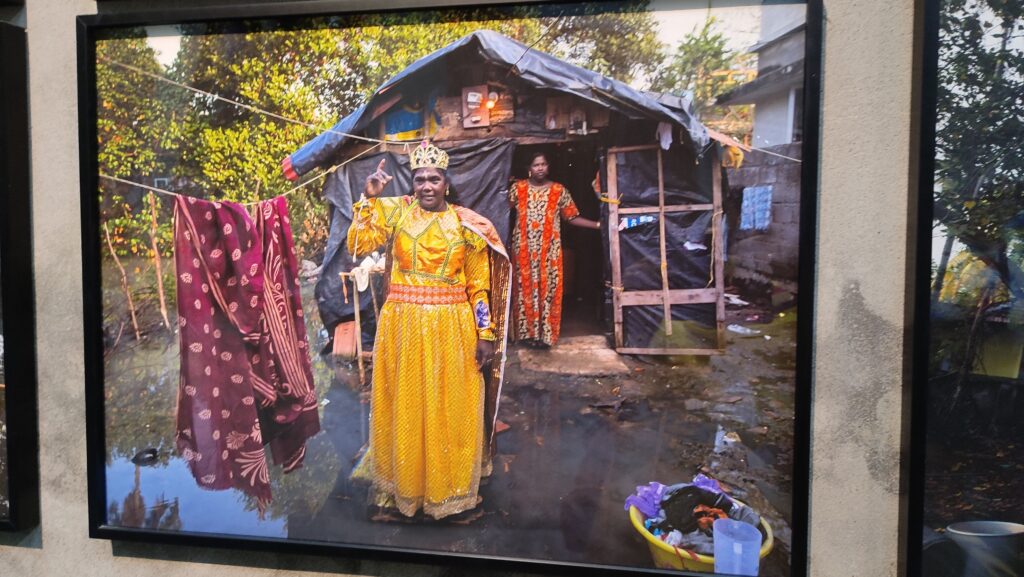
Outside, pinned on a grey wall, a glass plaque read – “There are three sorts of people: those who are alive, those who are dead and those who are at sea.”
At Keezhadi
We moved to a smaller gallery in a quiet street in Jew Town. Di and MoMo introduced us to the artist who showed us his work. V Saranraj had an unassuming presence. His kind eyes searched hopefully as Di brought us to see his installation set up on a small screen. The plaque said this was a 22-minute video about an archaeological excavation at `Keezhadi,’ near Madurai, Tamil Nadu. The video started. We saw men and women walk past coconut palms and mud, fields and forests, when the camera lens inverted our gaze and we were transported to the pit that the workers were digging.
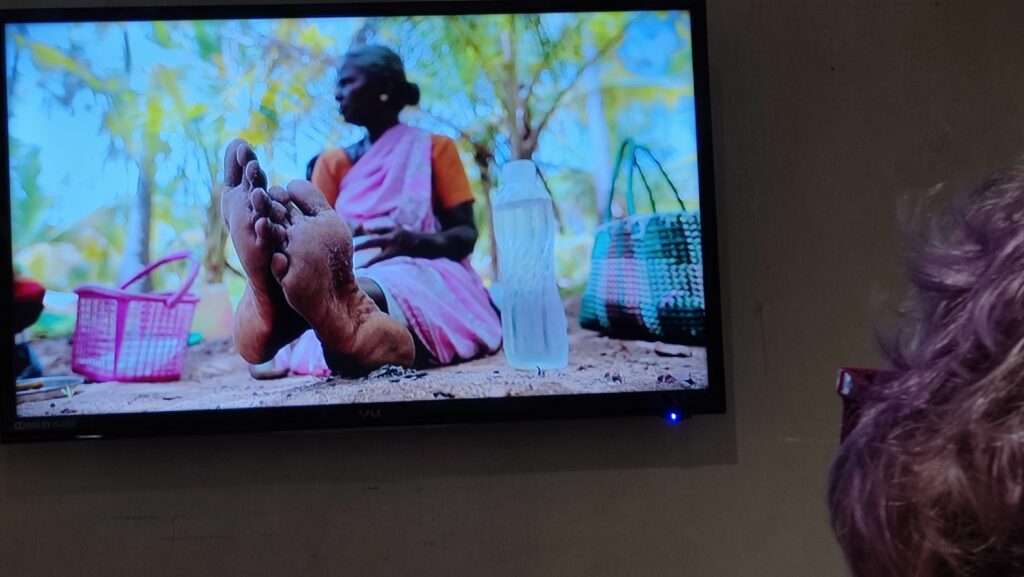
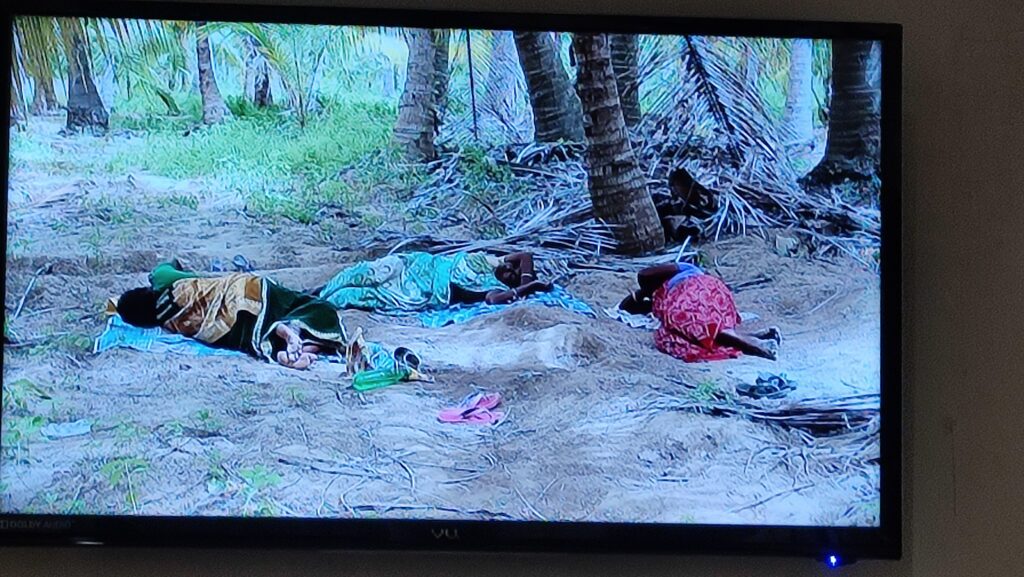
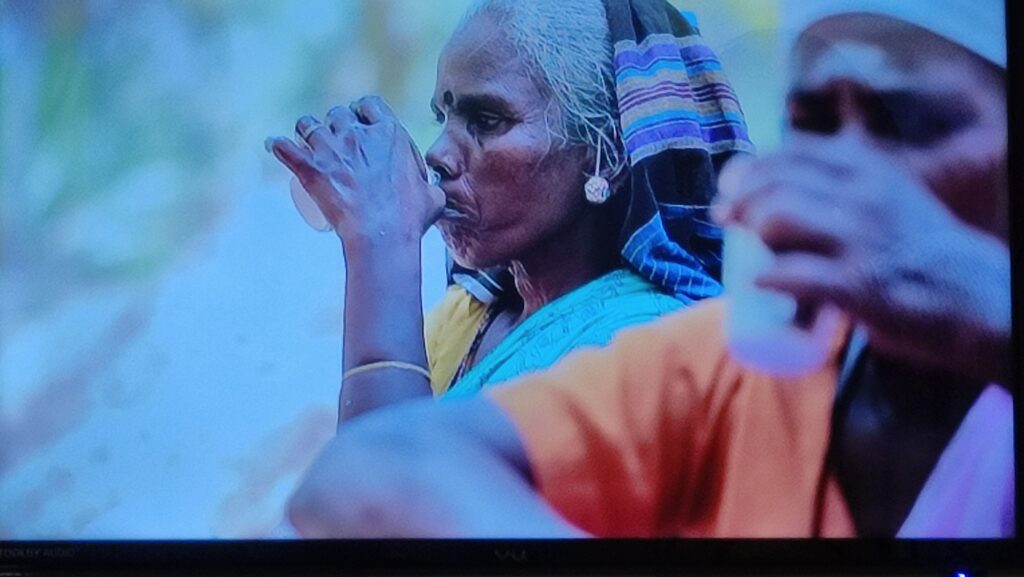
They turned their spades to unearth small piles of terracotta. Then the women took a lunch break. They sat under trees in the open sun with their steel tiffin boxes. Some took a nap and the camera showed us their cracked heels – grey and hard as stone. They went back to their digging. We stayed with them. We did not see the archaeologist or the site as a whole. This was the opposite of what a Nat-Geo or Discovery type video on an archaeological dig would show, where workers are always invisible. The installation artist Saranraj cut out that story to tell an entirely different one. The story of the workers.
I asked Saranraj if the government and the workers had seen his film. “Yes,” he said in Tamil and Maheen translated. “Before the film, the women were getting paid 320 or 340 rupees a day and the men 360.” After, the wages were made equal and universally bumped up to 500 per day.
At home Always
At home, the Peacock Inn, where we were staying, Maheen went out and brought back some good old-fashioned junk food. Over egg fried rice and shawarma the duo regaled us with vignettes from their life. “When we’d go to a restaurant, the server would always come to me with the bill,” says Di, explaining that the restaurant would always see her as the white woman, from a background of privilege and Maheen as an accompanying driver. They couldn’t see past that and it always made Maheen feel like he didn’t belong. That he was out of place at a posh people’s restaurant. So Di did the one small thing to change the dynamic and settle the matter once and for all. “I transferred some money to him and made him pay. That changed everything.”
“She is my university,” said Maheen, explaining how he had to drop out of school. His father died when he was young. He had a family to take care of and then he was married and had two wonderful children. Di taught him that he could use the smattering of English that he knew to make his own way around the world, with or without her. From Singapore to Australia. Soon, Maheen would get used to being the talk of the town at their common friends’ gay wedding, where Maheen wore a traditional veshti. His taut, brown body glistened in the mellow Australian sun, and everyone wanted a picture with him. Suddenly, he was exotic.
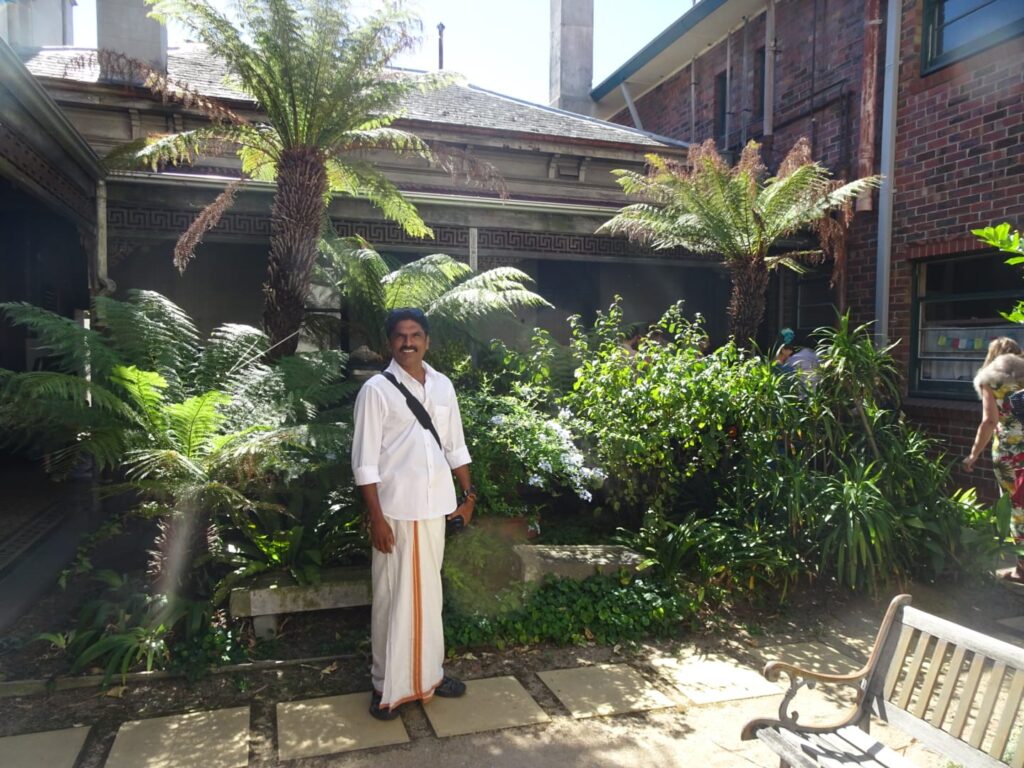
Back in Kochi, Di was always the exotic one. That became her art. “I was trained as an architect – the first woman architect at the Queensland University of Technology. In our fifth year, I will never forget, a male professor who looked at me and said – ‘Hair-dressing is in the next building.’ ” She was a trailblazer, even then.
Di went on to design theme parks. “Make it look like Tudor England,” said one client. Eventually she dropped out of the straitjacket she was in, giving up architecture and her marriage. She took to art when installations and virtual reality weren’t a `thing.’ She was ahead of the curve. At 60, her life was falling apart for various reasons and she was invited to the first Biennale at Kochi. She found a new self and this self was many balls in one.
“My life in and as a theme park” is what her website says. It’s called theballpark.art. It starts with her avatar as the BinDi Ball. This was a play on the Bindi which is considered to be the hot spot or centrifugal force of a woman. Di used the concept to create a performance that makes her and the viewer go through a reckoning with the self. Are we Gods or humans? Who are we? Di painted the blue of Lord Shiva onto her face to ask that question. The blue morphed into another possibility. Di’s face was now painted in the dramatic colours of a Kathakali dancer. That paint also peeled away revealing her white skin. Who was she? Who were we? Are we always looking for something we don’t quite know?
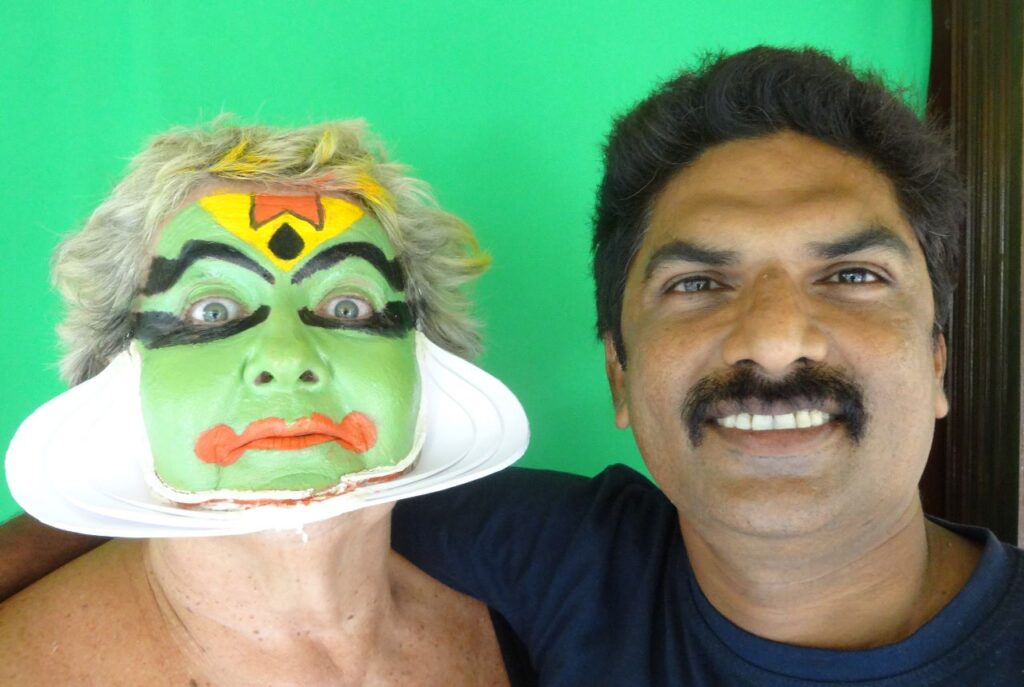
The next two days, we plunged into the mainframe of the Biennale. Aspin Wall, Pepper House, David Hall, the Uru Art Harbour. We compared notes. Who liked the Vietnamese artist’s installation – Thao Nguyen-Phan most? Set in the 1968, during the Cambodian push for independence, was the story of a construction worker, in love with cement jaalis and also with a Cambodian woman. Is the modern universe, modern love, modern politics set on a collision course? The installation made us ask this as we entered a three-screen tapestry where the green thoren fruit was in sharp contrast with concrete jungle of the protagonist, a construction worker. Real life criss-crossed with the make-believe. The imagination was respite from the concrete, from the city, from an alien existence. We were plunged into a sickly- sweet Ang Lee type fable. The fruit turned into poison. The dream was a curse.
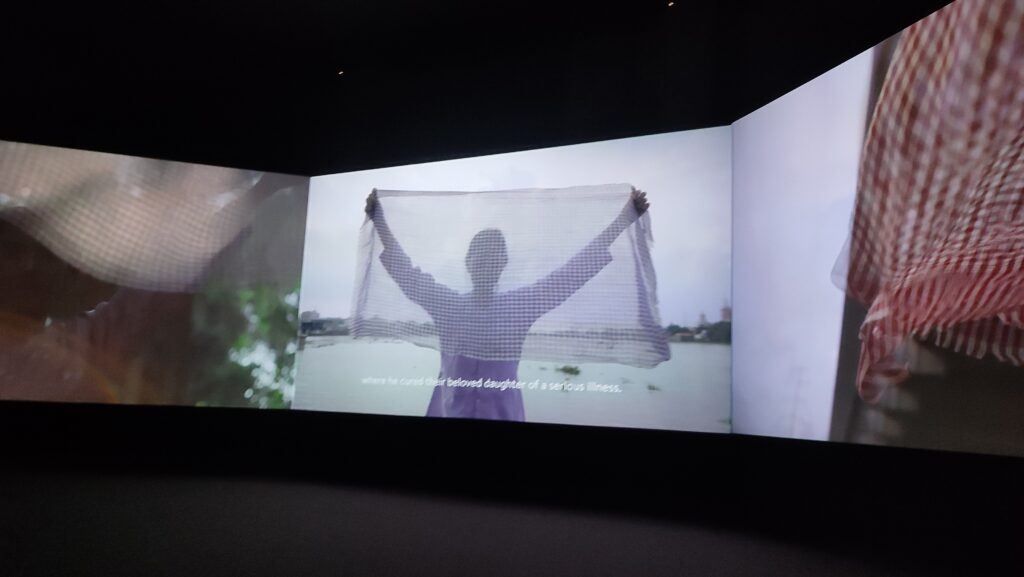
Is life a fable? Do we live in our imaginations? Who are we? Are we one avatar or many? So many questions swirled overhead, it was dizzying.
Back at the Peacock Inn, Di showed us yet another of her avatars – the Beach Ball. This was a performance piece turned social movement, to clean up the sludge and packets and plastic that deadened Kochi’s beaches. Di entered the frame in aqua coloured hair, orange gloves and a floral printed kaftan – a beach ball. Soon, the performance became a THING, said Di; and the Clean Fort Kochi Foundation was started.
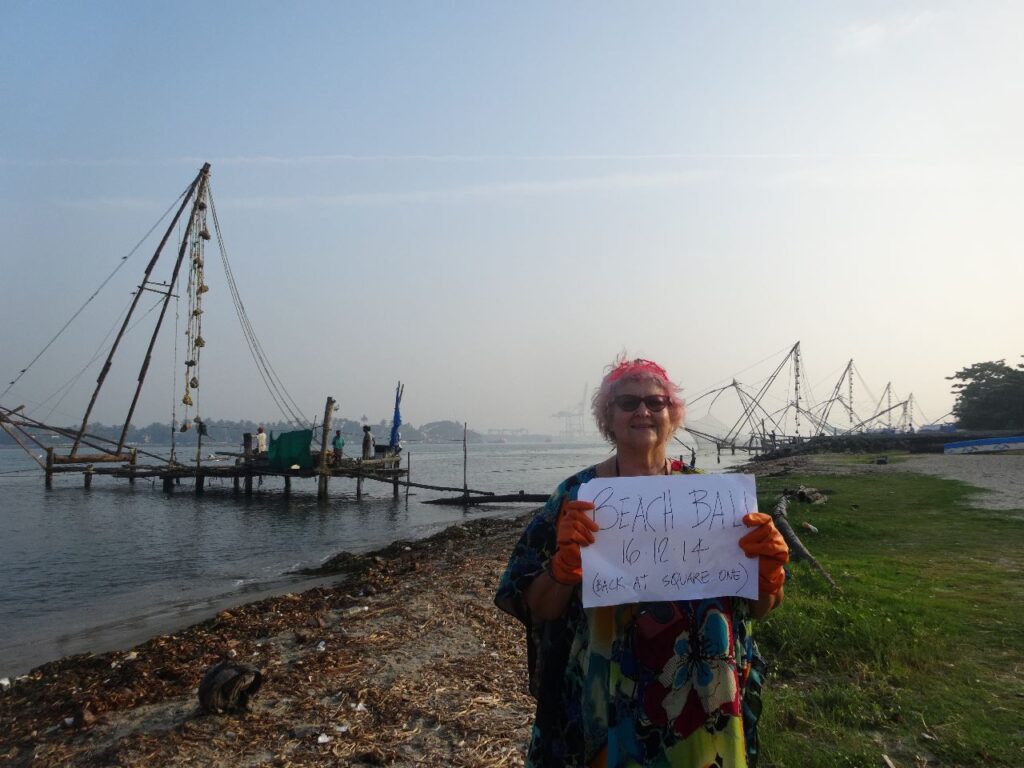
Cancer got in the way of her continuing her tryst with cleaning. But it did not get her to stop living on her own terms. Six months in Kochi. Six months in Brisbane. Many balls to juggle, many lives to fix. The Di[na]Mo was making waves from one Biennale to the next.
For us, the duo was the art. The real Biennale. The collapsing of many universes.
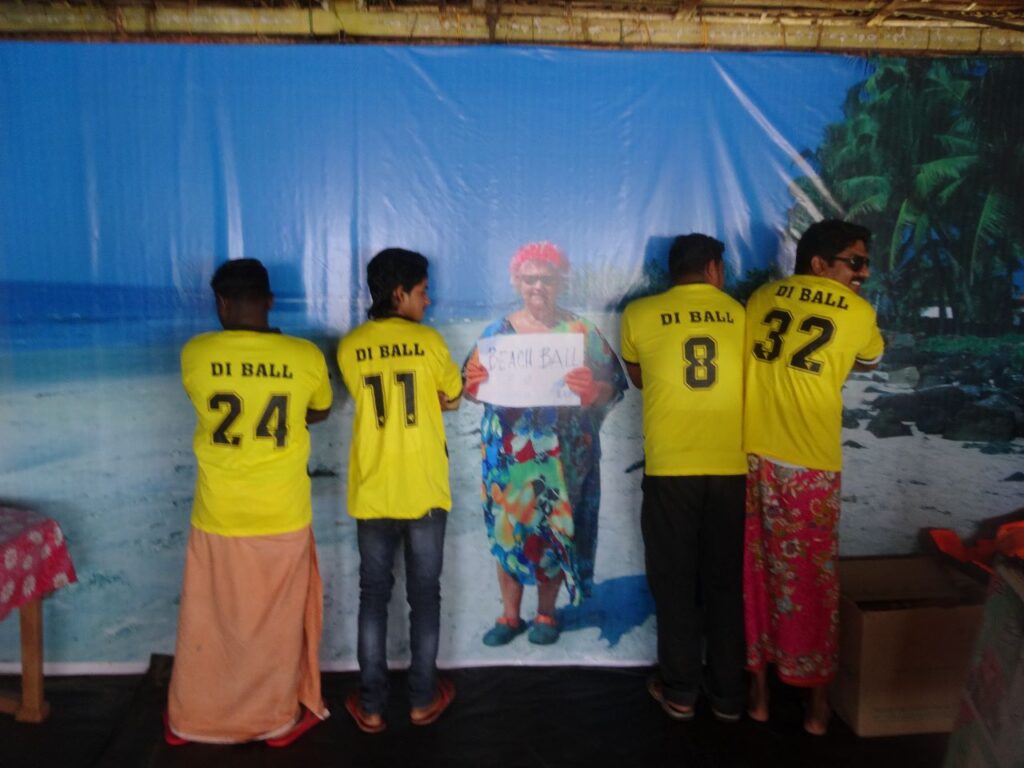
And now, presenting Di as the self-appointed Queen of Kochi. “I’m Kochi Rani,” she said to a non-plussed girl at the Biennale ticket counter. Over time, of all the avatars, this one seems to have stuck. The Kochi Rani went around town, conferred her stamp of approval on mostly ignored, under-represented people. She shone attention on Selina, a Christian woman whose job it was to clean up the ash at the crematorium after Hindus put to rest their beloved and departed. Di also conferred her royal decree on the beach hawker who decided to keep a dustbin. Eventually a few cops asked her to confer her royal stamp of approval on them and they printed t shirts with Di Ball on it and hung it at the police station.
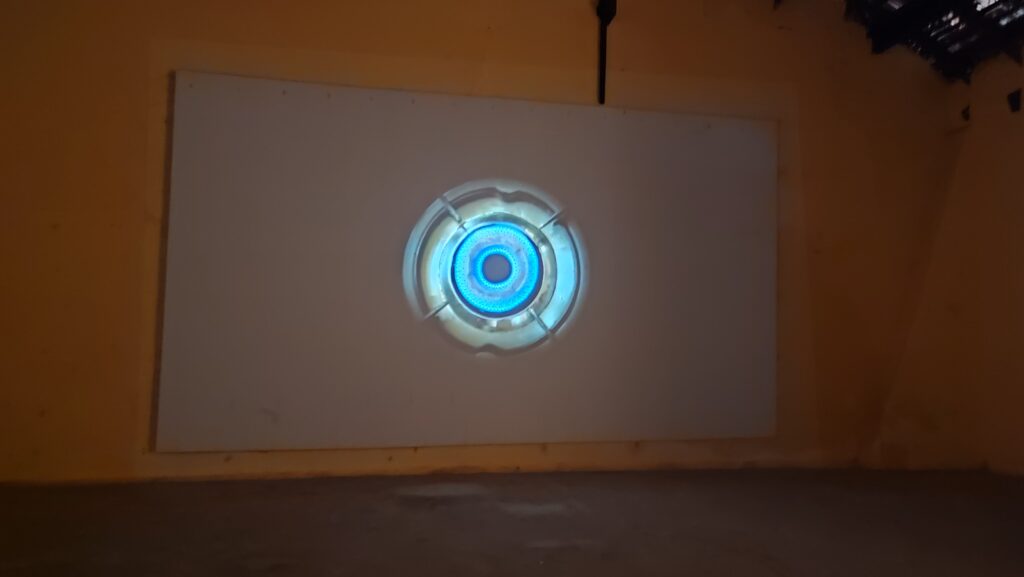
As we went from gallery to gallery, looking strictly at what Di[na]Mo wanted us to see, we each picked our festival favourites. At the top of our list was South African installation master – William Kentridge’s piece – `Oh To Believe In Another World.’ Kentridge’s installation delivered as expected. It was a masterpiece in craftsmanship, in storytelling and in raising the big political question – should we look for a utopia at all? The dystopic show was appropriately set to Shostakovich’s 10th symphony that was originally scored for precisely this sort of absurdist theatre. In Kentridge’s world, people had lampshades for heads and wooden compasses for legs. Stalin and and the NKVD or Stalinist police was interspersed with placards like these – “TWIST HIS SENTENCE BEHIND HIS BACK…AND SCRIBBLE.” And “LADIES AND GENTLEMEN, PATCH UP MY SOUL…SO THE EMPTINESS CAN’T LEAK OUT.”
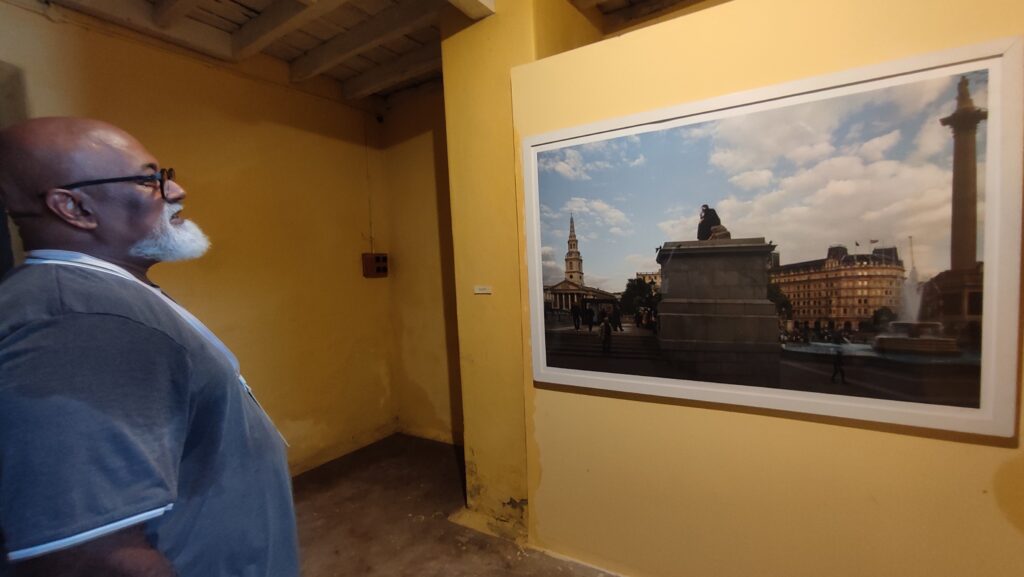
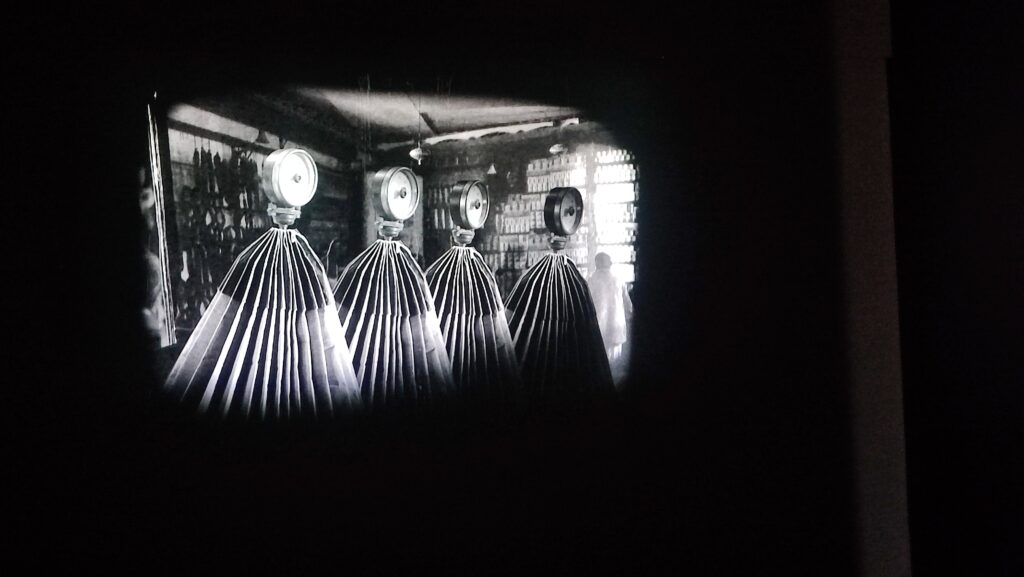
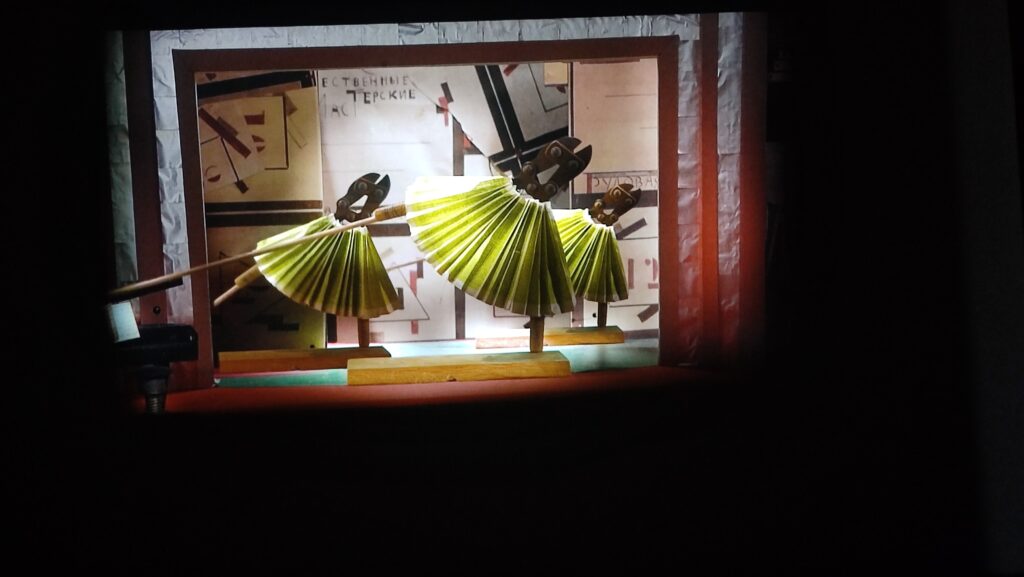
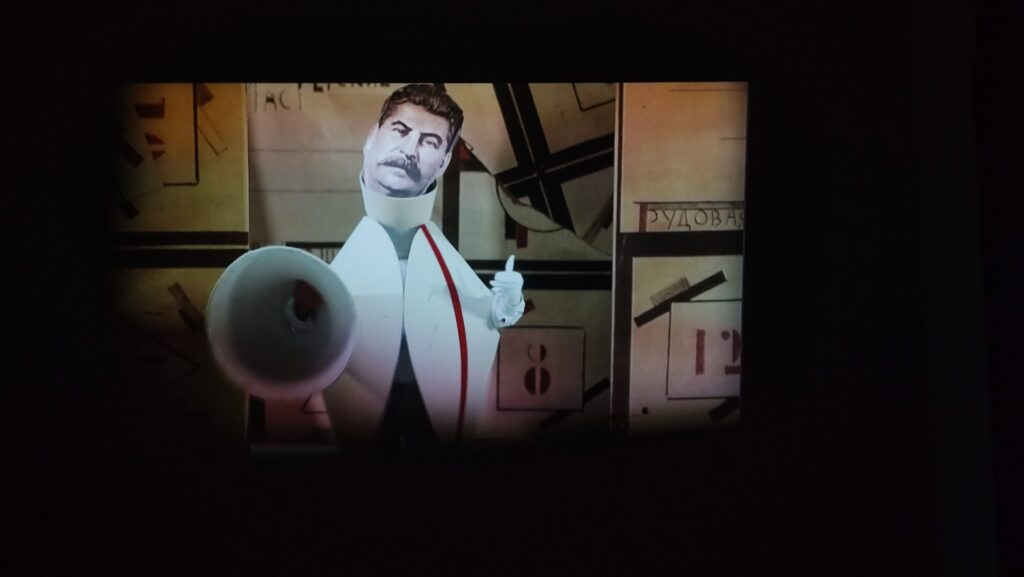
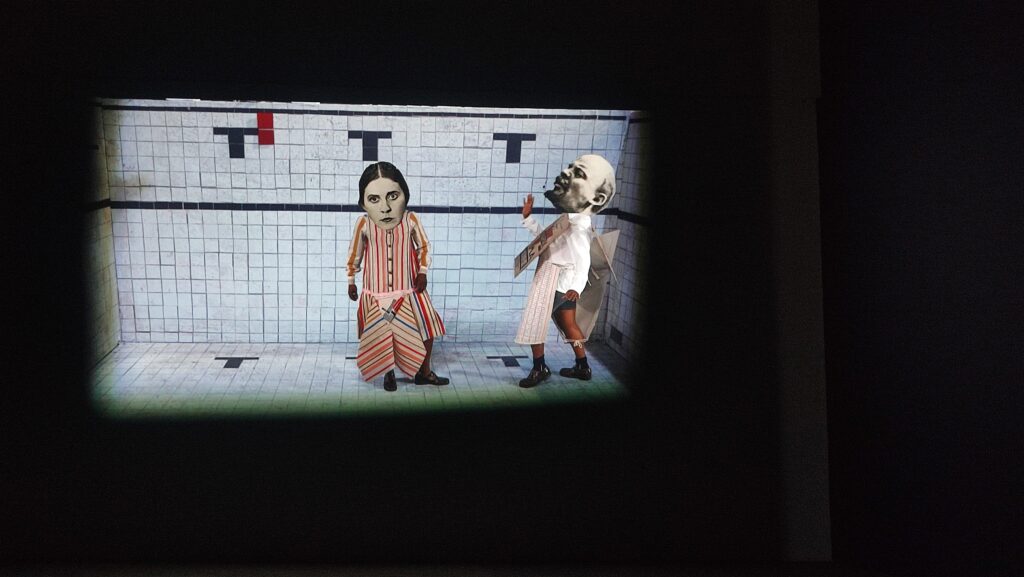
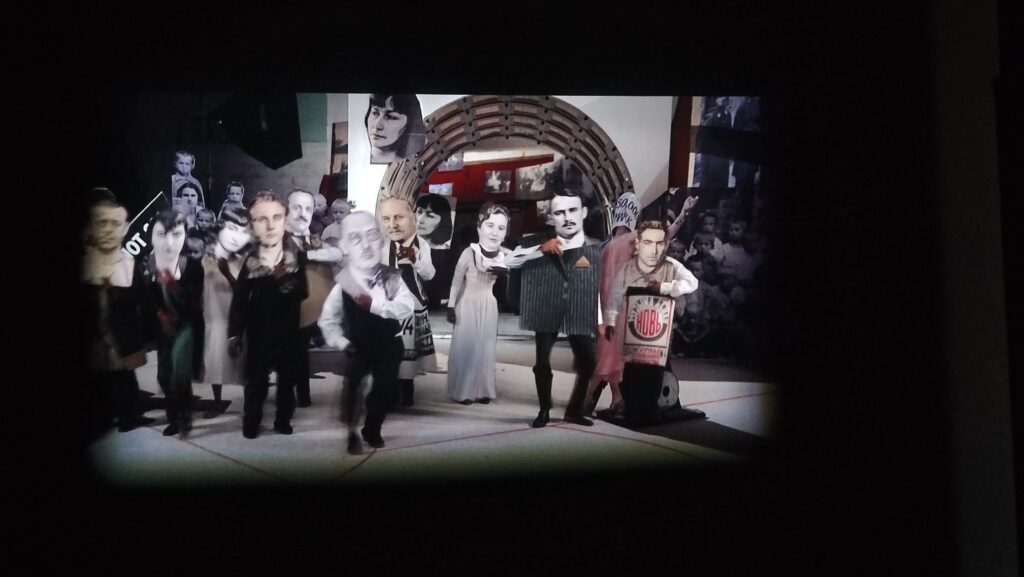
At David Hall, two Nepali artists showed us their dystopia wordlessly. `Dadyaa,’ was a video in which an old couple fashion a make-believe village out of wooden masks so they don’t need to live in the here and now. The real world they inhabit – a cruelly cold snowscape in Nepal, formed the backdrop of the couple’s masked creatures. In this way, artists Pooja Gurung and Bibhusan Basnet showed us in 17 minutes what poverty and being invisible can do to your soul.

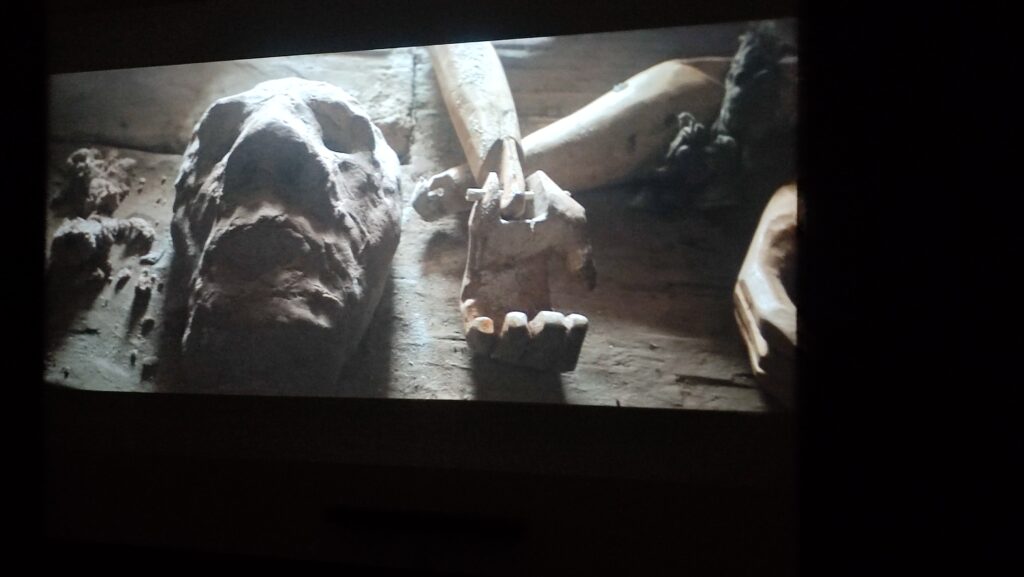
Over three and a half intense days, Di and Maheen-MoMo showed us how to live. Many lives, juggling many balls. The make-believe is mostly where we ought to be.
The duo’s masterly art was in full play. They had used their occult powers to put us all back together again.



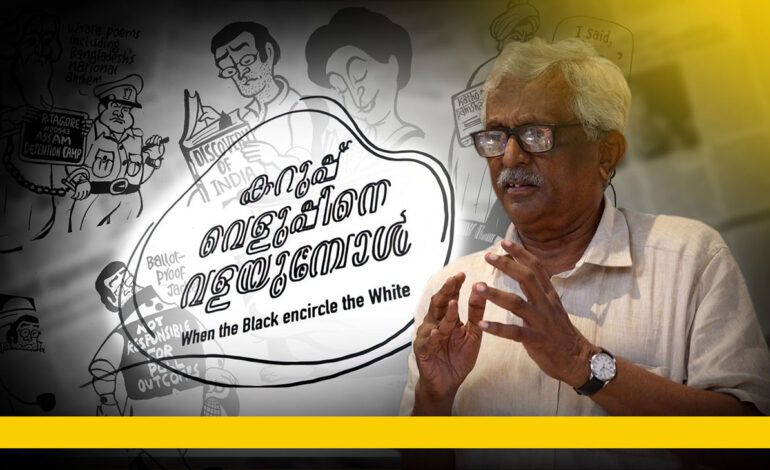

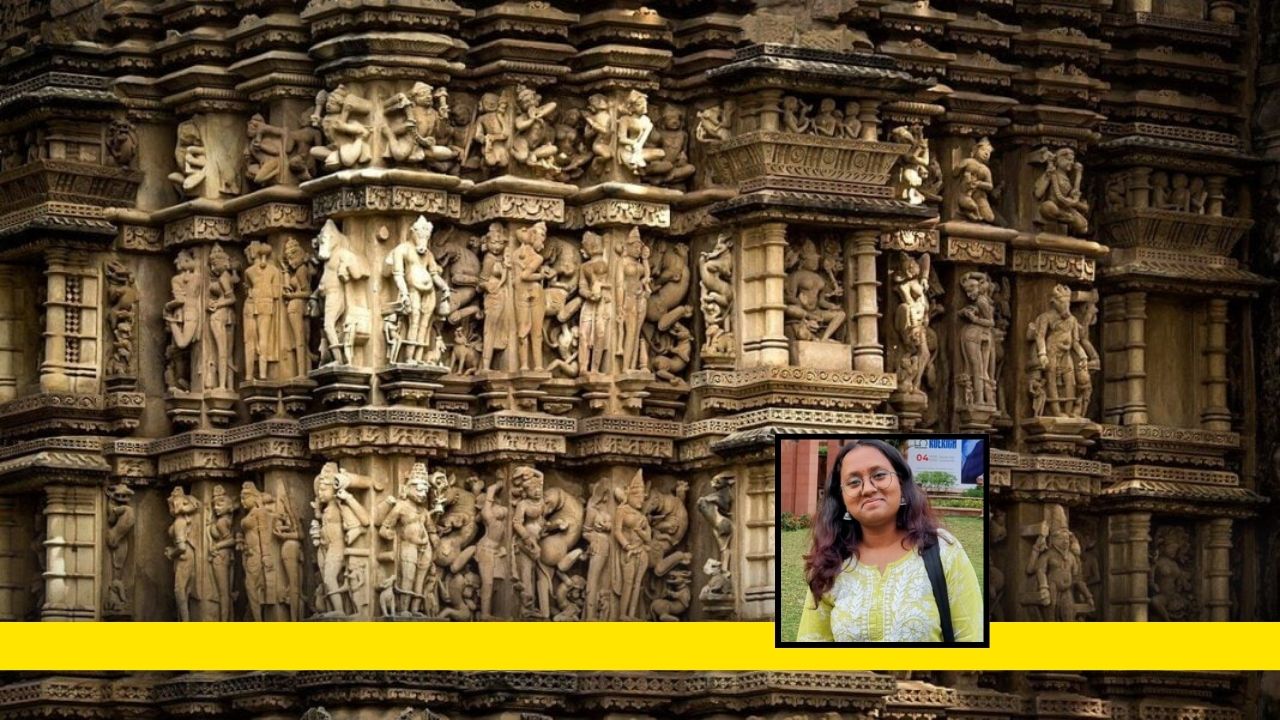
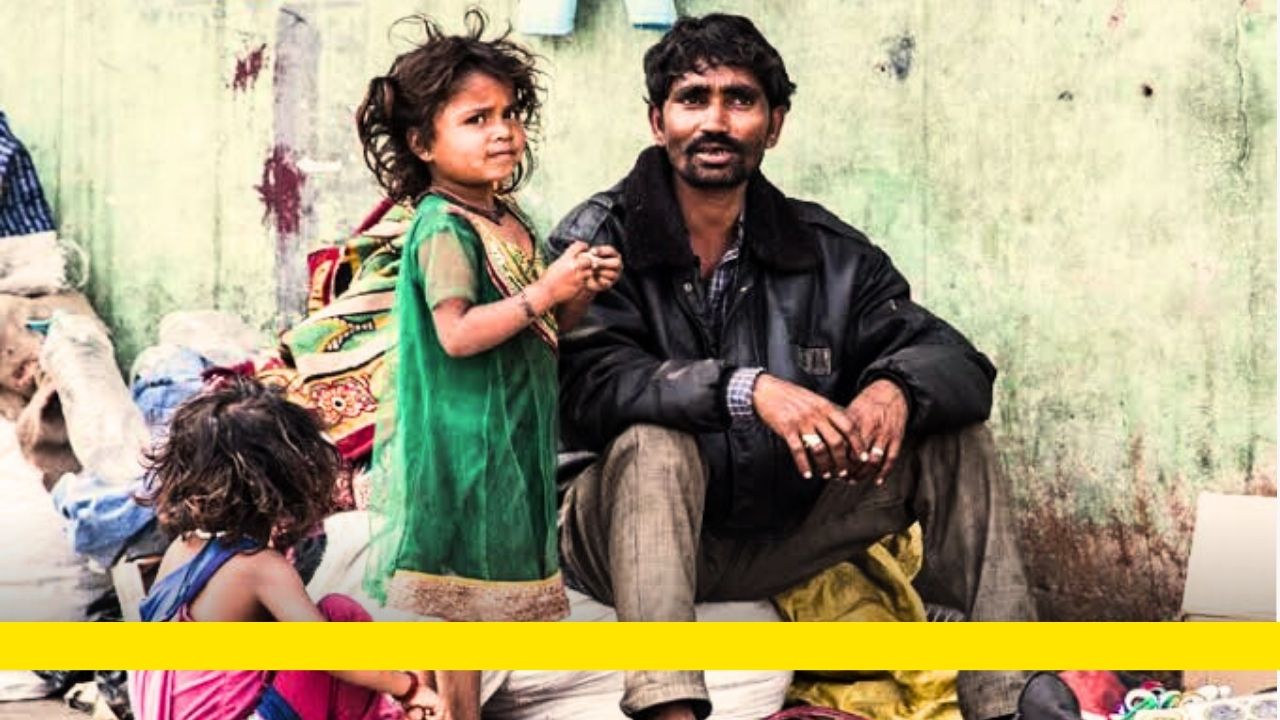
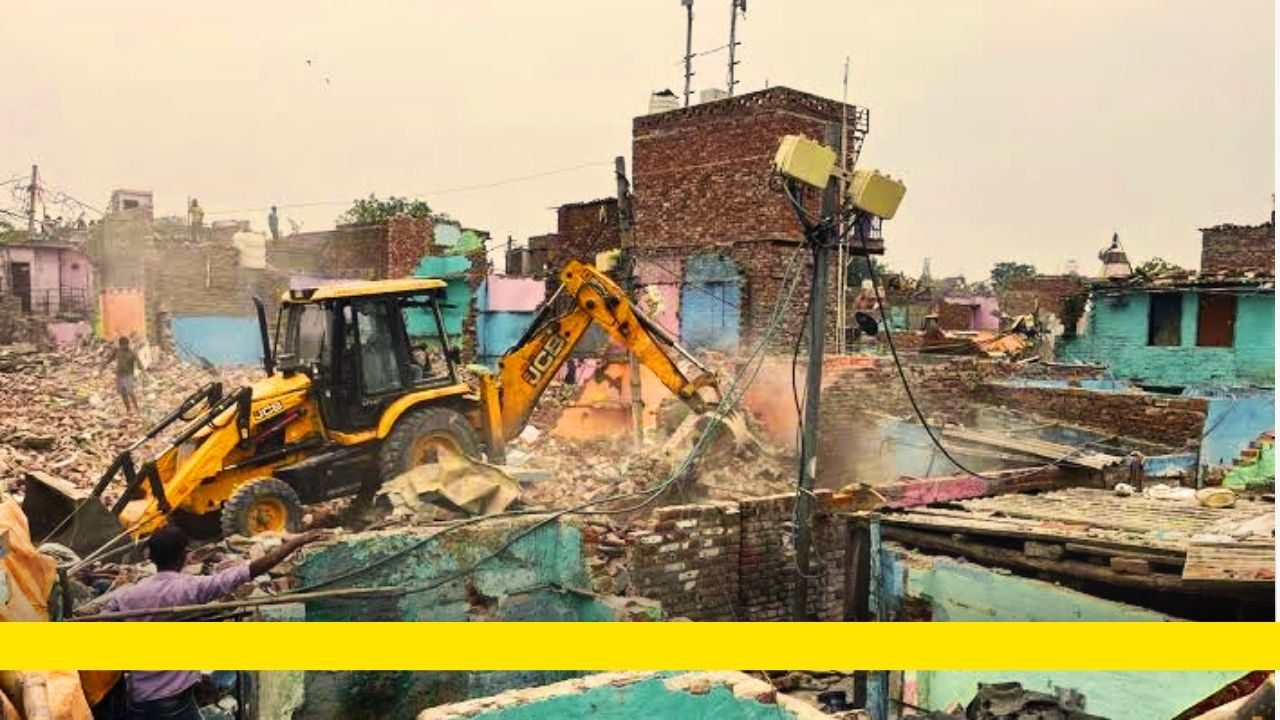




Wish this alternative guide had come out earlier . Had visited the Biennale last month but had missed out on both ” Keezhadi ” and ” Oh to believe in another world ” . Clear from Revati Laul’s account that both were poignant , extraordinary depictions of life and history . Hoping to catch up with these and the artists as early as possible